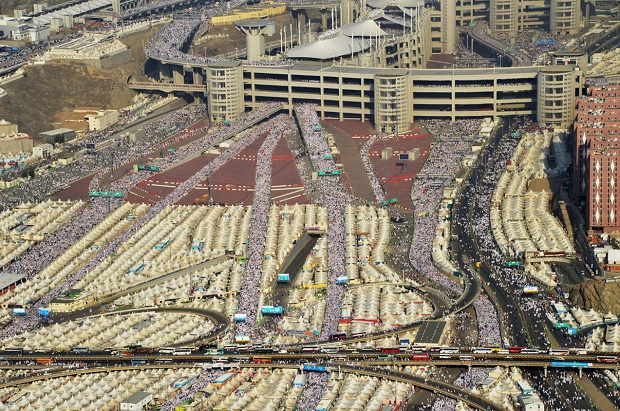In a big crowd, as at the hajj, danger can come on quickly

In this image released by the Saudi Press Agency (SPA), hundreds of thousands of Muslim pilgrims make their way to cast stones at a pillar symbolizing the stoning of Satan in a ritual called “Jamarat,” the last rite of the annual hajj, on the first day of Eid al-Adha, in Mina on the outskirts of the holy city of Mecca, Saudi Arabia, Thursday, Sept. 24, 2015. AP
NEW YORK — When too many people are squeezed into too small a space, the situation can turn dangerous very quickly, experts say. And that, they say, may be key to understanding the deaths of more than 700 pilgrims on the outskirts of Mecca.
READ: Saudi Arabia: Stampede at hajj kills 717 pilgrims
“It’s largely a physical phenomenon, not a psychological one,” says Dirk Helbing, a professor of computational social science at ETH Zurich, who has studied crowds and disasters.
When the density is too high, movements of a body “transfers forces to other bodies. These forces can add up and create uncontrollable movements in the crowd,” he said Thursday.
“As a result … people might fall on the ground and might be trampled by others” or die of suffocation as others fall on top of them, he said.
Article continues after this advertisementAnd it can happen fast. Even a small incident like two people starting a fight or trying to walk against the crowd can quickly snarl a free-flowing crowd in large-scale congestion, he said. As more and more people pour in, the density builds up, setting the stage for lethal turbulence.
Article continues after this advertisementSo “a small problem turns into a big problem that is not controllable anymore,” Helbing said. A large crowd can “get out of control very quickly.”
Even for those who stay on their feet, the pressure of the surrounding bodies builds up “and people can’t breathe,” said Keith Still, a professor of crowd science at Manchester Metropolitan University in England.
“People don’t die because they panic. They panic because they are dying.”
Still, who has worked on hajj crowd management with security officials in the past but had no direct knowledge of this year’s situation, said Thursday’s disaster in Saudi Arabia appeared to result from too many people jammed into a space too small to hold them.
“Every system has a finite limit, the number of people who can go through it,” Still said. “When you get above that number, the risks increase exponentially.”
At the hajj, he said, “it just looks like the system has gone beyond its safe capacity.”
The Saudi Interior Ministry has said the crush appeared to result from two waves of Muslim pilgrims meeting at an intersection. King Salman has pledged a speedy investigation to improve crowd management.
One effective strategy for crowd safety, Still said, is a hold-and-release approach. People are stopped temporarily from following a route and then let go in pulses. “That creates space,” Still said.
Helbing said the hajj is “one of the most difficult mass events to organize,” in part because some pilgrims aren’t registered for the event and so don’t adhere to assigned camps or official schedules, and the hajj attracts people of many origins and languages.
The last such hajj incident was nine years ago near the same site.
READ: Glance at major hajj-related incidents in Saudi Arabia
“When such an event has been safe for a number of years, that’s not a reason to relax and take things easy,” he said. “There is always a kind of a critical threshold. If your system happens to get beyond that threshold, then things get uncontrollable.”
RELATED STORY